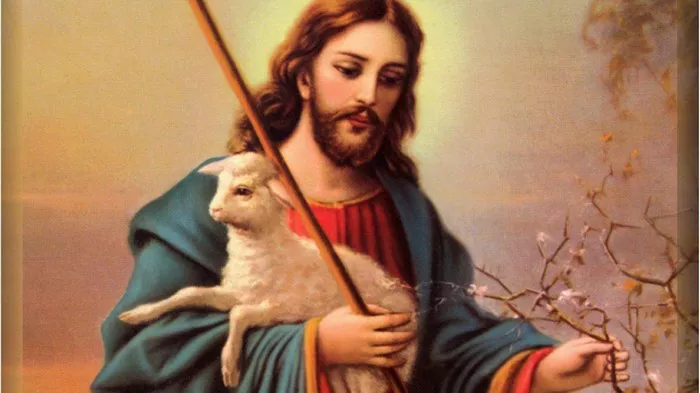The symbol of the lamb holds profound significance throughout the Bible, serving as a powerful metaphor rich in both cultural and theological meaning. From the Old Testament to the New Testament, the lamb appears as a symbol of sacrifice, innocence, redemption, and ultimately, the person of Jesus Christ. Exploring the multifaceted symbolism of the lamb within the biblical narrative reveals layers of spiritual depth and insight into the nature of God‘s relationship with humanity.
Old Testament Roots: Sacrifice and Redemption
In the Old Testament, the imagery of the lamb is closely associated with sacrificial rituals prescribed by God for the atonement of sins. The book of Genesis introduces the concept of sacrificial offerings when Abraham is called to sacrifice his son Isaac. In a dramatic turn of events, God provides a ram caught in a thicket as a substitute for Isaac, establishing the principle of substitutionary sacrifice and foreshadowing the ultimate sacrifice of Jesus Christ.
The Exodus narrative further underscores the significance of the lamb as a sacrificial symbol. During the final plague inflicted upon Egypt, the Israelites are instructed to slaughter a lamb without blemish and mark their doorposts with its blood to protect them from the Angel of Death. This Passover lamb becomes a symbol of deliverance and redemption for the Israelites, commemorated annually in the Passover feast.
Throughout the Old Testament, the sacrificial system involving lambs and other animals serves as a temporary means of atonement for sin, pointing forward to the ultimate sacrificial Lamb who would take away the sins of the world.
The Lamb of God: Jesus Christ
In the New Testament, the symbolism of the lamb reaches its fulfillment in the person of Jesus Christ. John the Baptist, upon seeing Jesus, declares, “Behold, the Lamb of God, who takes away the sin of the world!” (John 1:29). This proclamation identifies Jesus as the long-awaited sacrificial Lamb foretold by the prophets, whose death would bring about the forgiveness of sins for all humanity.
The imagery of the sacrificial lamb is powerfully embodied in the life and ministry of Jesus Christ. His voluntary sacrifice on the cross, depicted as the Paschal Lamb offered for the salvation of humanity, fulfills the Old Testament foreshadowing of redemption through blood sacrifice. Through his death and resurrection, Jesus provides the ultimate atonement for sin, reconciling humanity to God and inaugurating a new covenant based on grace and forgiveness.
Innocence and Purity
In addition to its sacrificial connotations, the lamb symbolizes innocence and purity in the biblical narrative. In the book of Isaiah, the prophecy of the suffering servant describes one who is “led like a lamb to the slaughter” (Isaiah 53:7), highlighting the innocence and vulnerability of the Messiah in his willingness to endure suffering on behalf of others.
Similarly, the book of Revelation portrays Jesus as the Lamb standing before the throne of God, symbolizing his victory over sin and death through his sacrificial death and resurrection. This imagery emphasizes the purity and sinlessness of Jesus, who is worthy to receive worship and adoration as the Lamb who was slain.
Shepherd and Flock
The symbolism of the lamb extends beyond sacrificial imagery to encompass themes of pastoral care and protection. In the famous psalm of David, the metaphor of the Lord as a shepherd caring for his flock is evoked, with the psalmist declaring, “The Lord is my shepherd; I shall not want” (Psalm 23:1). As a shepherd cares for his lambs, so too does God provide guidance, protection, and sustenance for his people.
Jesus further develops this imagery in his teachings, describing himself as the Good Shepherd who lays down his life for his sheep (John 10:11). Through this metaphor, Jesus emphasizes his intimate relationship with his followers, offering them security and assurance amidst life’s trials and tribulations.
Conclusion
The symbolism of the lamb in the Bible encompasses a rich tapestry of themes, ranging from sacrificial atonement to innocence, purity, and pastoral care. From the Old Testament sacrificial system to the New Testament revelation of Jesus Christ as the ultimate Lamb of God, this symbol serves as a powerful reminder of God’s redemptive plan for humanity.
Through the sacrificial death and resurrection of Jesus Christ, the lamb symbolizes the forgiveness of sins and the restoration of fellowship between God and humanity. As believers, we are called to embrace the symbolism of the lamb in our lives, recognizing the profound depth of God’s love and grace manifested in the person of Jesus Christ, the Lamb who was slain for our salvation.


